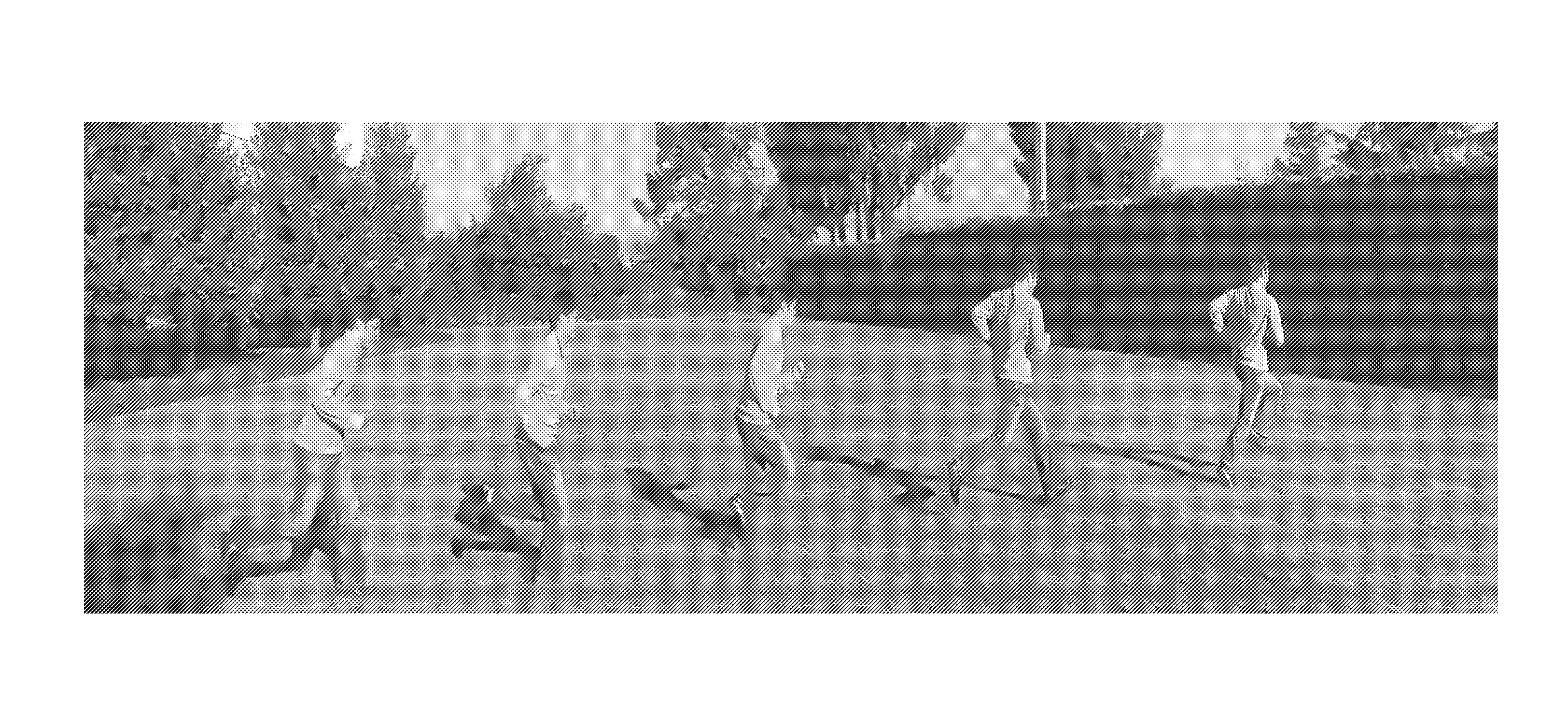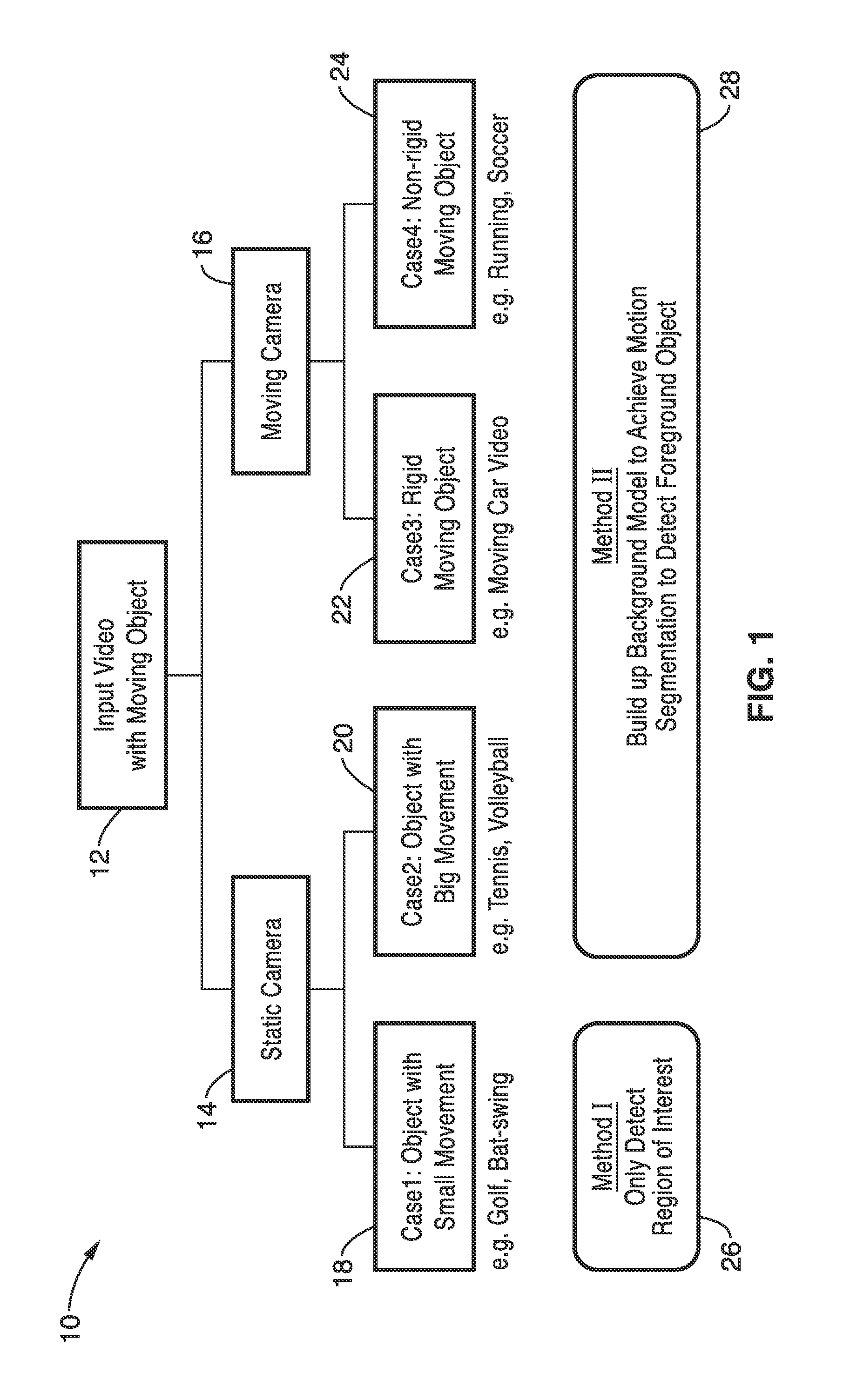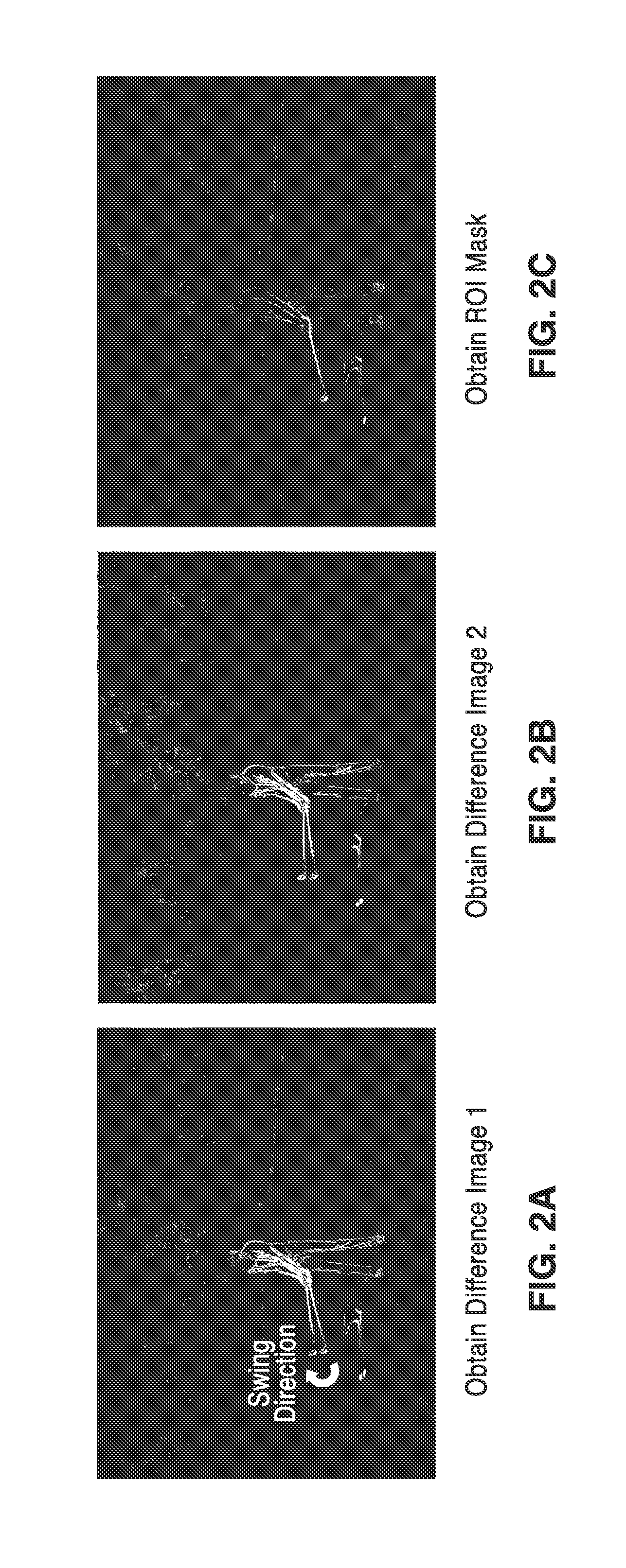Tail the motion method of generating simulated strobe motion videos and pictures using image cloning
a motion and motion technology, applied in the field of strobe motion video and picture generation, can solve the problems that methods and similar recently developed techniques cannot be applied, and achieve the effects of increasing the cost function within the overlap area, preventing cutting, and increasing the cost function
- Summary
- Abstract
- Description
- Claims
- Application Information
AI Technical Summary
Benefits of technology
Problems solved by technology
Method used
Image
Examples
embodiment 1
[0102]2. The apparatus of embodiment 1, wherein said programming executable on said computer for generating a simulated strobe effect output comprises: applying motion segmentation to detect a foreground object in each image frame of the received video sequence; selecting at least one checkpoint image based on time differences of each image frame within the received video sequence to attain a desired interval between checkpoint images; and updating an overall foreground mask and pasting an overall foreground area on future images as each said checkpoint image is reached.
embodiment 2
[0103]3. The apparatus of embodiment 2, further comprising programming executable on said computer for generating a background model for applying said motion segmentation if the relative motion of the target object is large in relation to the frame size.
[0104]4. The apparatus of embodiment 1, further comprising programming executable on said computer for selecting between motion tracking for large motions or image differencing for small motion when determining a region of interest (ROI) within the received video sequence.
[0105]5. The apparatus of embodiment 1, further comprising programming executable on said computer for determining image differenced as a basis of segmenting the region of interest within the received video sequence.
[0106]6. The apparatus of embodiment 1, wherein said multiple strobe effect generation process comprises a first process and a second process within programming executable on said computer; wherein said first process is selected in response to detection ...
embodiment 12
[0113]13. The apparatus of embodiment 12, further comprising programming executable on said computer for determining image difference as a basis for segmenting a region of interest within the video sequence
[0114]14. The apparatus of embodiment 12, wherein said simulated strobe motion output contains multiple foreground images of the target object, representing different time periods along a trajectory captured in the received video sequence, over a single background image.
[0115]15. The apparatus of embodiment 12, wherein said apparatus is selected from a group of devices configured for processing received video consisting of camcorders, digital cameras, video recorders, image processing applications, televisions, display systems, computer software, video / image editing software, and / or combinations thereof.
[0116]16. The apparatus of embodiment 12, wherein said simulated strobe effect output comprises a video.
[0117]17. The apparatus of embodiment 12, wherein said simulated strobe effe...
PUM
 Login to View More
Login to View More Abstract
Description
Claims
Application Information
 Login to View More
Login to View More - R&D
- Intellectual Property
- Life Sciences
- Materials
- Tech Scout
- Unparalleled Data Quality
- Higher Quality Content
- 60% Fewer Hallucinations
Browse by: Latest US Patents, China's latest patents, Technical Efficacy Thesaurus, Application Domain, Technology Topic, Popular Technical Reports.
© 2025 PatSnap. All rights reserved.Legal|Privacy policy|Modern Slavery Act Transparency Statement|Sitemap|About US| Contact US: help@patsnap.com



